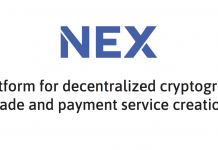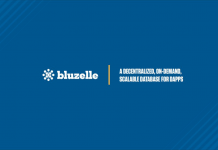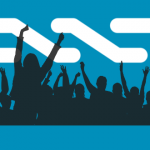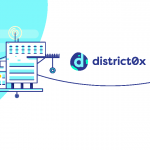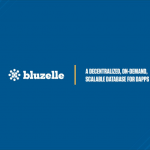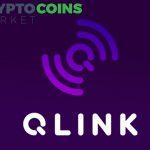Bloom is looking to revolutionize credit scoring globally. They are building a protocol for identity verification, risk assessment, and credit scoring.
PROJECT OVERVIEW.
Bloom is an ambitious company looking to revolutionize the Credit and Credit Scoring world, with a global approach. The company hopes to migrate both new and existing lenders around the globe to the blockchain using their platform.
They are creating the infrastructure required for companies to evaluate credit risk on the blockchain. This is in the form of a protocol for identity verification, risk assessment, and credit scoring using Ethereum and IPFS.
The idea is to allow lenders to safely issue loans globally-to people without access to credit-with far more data than was previously available.
BACKGROUND.
Three billion people globally cannot obtain a credit card, according to the World Bank. 38 percent of the world’s population does not have a bank account. The world’s eight richest billionaires control the same wealth as the poorest half of the globe’s population.
No matter your age, gender, language or nation, credit is the key driving force to boosting economic prosperity. Credit is the gateway to financial inclusion and the bridge to financial freedom and success.
An individual’s ability to achieve social mobility and rise through the economic ladder hinges on their access to credit. From a newlywed couple looking to settle down and buy their first home, to an aspiring entrepreneur looking to start a small business, virtually every human on the planet depends on credit to grow.
Despite this, the World Bank’s analysis shows that for three billion people, obtaining a credit score is impossible. For these people, the dream of buying their first home or starting a business is simply out of reach.
In a world of globalization, the credit industry is far from global. Credit scoring providers cannot operate across borders, meaning that when borrowers move to a new country, they must rebuild their credit scores from scratch as their score does not follow them.
Bloomberg recently published an analysis of the credit industry, declaring that there is “One Monopoly the U.S. Government Wants to Keep”, referring of course to the credit monopoly currently controlled by FICO, which provides scoring on more than 90 percent of U.S. loans. Despite their reach, FICO’s credit scoring system is deeply flawed, leaving over 45 million potentially creditworthy Americans with no credit score.
It’s no secret that cryptocurrency and blockchain technologies are paving the way for a financial revolution. Blockchain-based credit offers a number of substantial improvements. The days of data leaks, scores influenced by governments, lobbying, lack of cross-border scoring, and identity fraud will be a thing of the past.
Bloom is one of the projects trying to bring credit to the blockchain.
HOW IT WORKS.
Bloom securely brings your current identity and credit data to the blockchain, while vastly improving the status quo. Here is how:
BloomID/Global standard ID.
A global identity allowing borrowers to receive loans. No personal information will be stored on the blockchain/available to financial institutions. Only attestations and credit reporting information will be visible. A combination of public/private keys and encrypted IPFS packets is used to ensure that a data leak like Equifax’s doesn’t happen on Bloom. Obviously given the right privileges, a lender could look up the data they need as to make a risk assessment on loan. But for lenders who don’t have sufficient privileges provided from the user, there would be no way to tie information back to a user.
A number of trusted nodes and ID providers will be integrated to the BloomID system; a requirement though would be that they could federate ID’s back to real world ID’s to prevent against Sybil and exit scams.
BloomIQ/Credit reporting system.
Bloom’s system of record for the reporting and tracking of all the debt obligations tied to a person. This component pulls in all available credit history (from FICO and others). It also pulls in alternative data. They want to make an open market to help introduce MORE ways to determine creditworthiness. Phone payments, consistent service payments, utility bills, etc. Through BloomIQ, data providers will earn for helping get this data into the system. (There are many organizations that have (and sell) this information)
BloomScore/Risk assessment system.
Similar to a FICO Score or VantageScore, but using a proprietary model.
Bloom is also creating a network of peer-to-peer attestation in which members of a community can vouch for others who they deem to be responsible with their finances. This doesn’t mean that Alice is saying “Bob is good for a $10,000 loan”. This is Alice saying “I trust Bob to be responsible with the amount of credit he takes relative to his ability to repay”. I don’t know exactly how much money my friends have, but I have a good sense of who is lower risk.
The idea behind this is then that as a lender experiments with issuing a loan to one member within a credit vouching network, if that loan is successfully repaid, if gives you some notion of the viability and risk profile of the surrounding community. The goal is that a responsible friend group who selectively vouch for each other can pull themselves out of a traditionally “high risk” community.
In each network, people can improve their score by having other trusted and high-score individuals vouch for them. Vouching for people who prove themselves credit-worthy increases your credit. Having credit-worthy people vouch for you improves your credit.
BLT TOKEN USES.
The primary function of the token is for the network to operate. It’s needed for payment, governance, and network security. Specifically:
1) Fraud Mitigation. The token allows HelloBloom to implement network fees, which mitigates attacks by imposing costs making attacks less economically viable for fraudsters. This is a little simplified, but basically token fees for identity attestations mitigate against Sybil attacks.
2) Payment. The token serves as a payment utility for lenders and data providers on the network. For companies that are able to provide data about an individual, they will obtain tokens. This occurs in traditional credit models today. For every person who gets credit checked using Bloom, and every lender issuing a loan through Bloom, they will need to pay tokens. In the current credit ecosystem, these fees on loans often represent quite a large portion of the total value of a loan.
3) Governance. The token is ultimately the governance mechanism for Bloom. Token based governance allows Bloom to root out bad actors and keep the system stable and provide influence to those who are contributing most to the network. This is also the primary mechanism of defining future changes to the BloomScore.
As tokens will be required to establish an identity on the Bloom network, the demand for the tokens will be relative to the number of people on the network.
ACHIEVEMENTS.
The smart contracts are still under development, and the testnet versions of the protocol will be rolled out later this year.
SIMILAR/RELATED PROJECTS.
ETHLend.
ETHLend is a decentralized lending application that is running on the Ethereum blockchain network. ETHLend solves the issue of trust by allowing borrowers to pledge ERC-20 compatible tokens or ENS domains as a collateral.
How it works: Borrower issues a loan request. The loan request creates a Smart Contract on the Ethereum Blockchain. Next, the borrower inserts data to the Smart Contract, such as the loan amount, the premium (interest rate) and time to borrow.
The borrower then inserts the Digital Token address and the amount of tokens that are used as a collateral. After all the data is set, the borrower transfers the Digital Tokens to the Smart Contract. Now, lenders can fund the loan.
In case the borrower does not repay on time, the Smart Contract transfers the Digital Tokens to the lender’s Ethereum address. From this point, the lender can either hold or sell the Digital Tokens on Cryptocurrency Exchange to cover any losses.
Once the borrower has gained reputation, they can loan without the need of a collateral by the use of Credit Tokens (CRE). Each repaid loans mints 0.1 CRE for every 1 ETH. 0.1 CRE allows to borrow without a collateral up to 0.1 ETH (1:1 ratio). If the borrower does not repay the loan, the whole CRE balance is burned (permanently deleted). ETHLend also solves the issue of volatility by allowing users to base the loans in USD (transactions in Ether, calculations in USD).
Everex.
Everex enables you to transfer, borrow, and trade in any fiat currency, anywhere.
No Bank account required. With settling times below 30 seconds, transaction costs of a few cents, and global support, the world’s markets are in the palm of your hand.
Everex would be a good partner for Bloom, they focus on microfinance and remittance services. Bloom is focusing on bringing credit scores and credit information to the blockchain.
Salt.
SALT (Secured Automated Lending Technology) is launching a lending platform to support loans denominated in national currencies collateralized by blockchain assets including bitcoin. The platform enables crypto-based asset holders to leverage their investment for cash loans - without having to liquidate holdings.
What’s its difference with competitors?
Bloom is more of a credit scoring platform that connects lenders and borrowers instead of being the lender itself.



